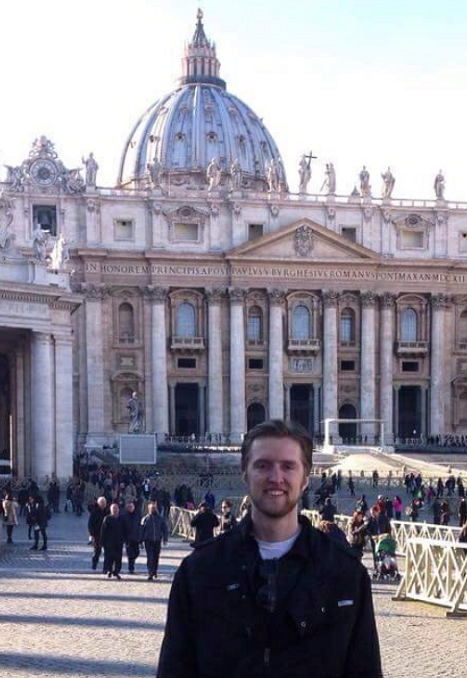The Pioneers and Soldiers Memorial Cemetery
 Wednesday, June 2, 2021 at 6:11AM |
Wednesday, June 2, 2021 at 6:11AM |  Michael Rainville Jr |
Michael Rainville Jr | Article by Michael Rainville, Jr.
At the corner of Cedar Avenue and Lake Street in South Minneapolis lies the oldest surviving cemetery in the city. Housing roughly 20,000 graves, the Pioneer and Soldiers Memorial Cemetery served the early settlers of Minneapolis from when it first opened in 1853 to its closing in 1919. Since then, it has turned into a peaceful area to honor those who paved the way for residents of this city and state.
 1936 photo of the front gates of the cemetery
1936 photo of the front gates of the cemetery
The founder of the cemetery, Martin Layman, settled in South Minneapolis with his wife Elizabeth in early 1853, where they built the 6th house ever constructed on the west bank of the Mississippi. One of the major problems for early Minneapolitans was finding a place to bury their loved ones. Those who had connections with Fort Snelling could be buried there, but that was only a fraction of the population, and unlike east coast cities, churches did not have cemeteries on their grounds. To ease the situation, Layman decided to use his South Minneapolis land as a cemetery, and shortly after, on September 11th, 1853, his pastor’s 10 month old daughter passed away and became the first burial in the cemetery. Close to the city center and located on a major road that connected Minneapolis to Fort Snelling, Layman’s Cemetery quickly became a popular spot to bury loved ones, and in 1858, Layman started selling plots as demand was rising. Throughout the next few decades, the cemetery expanded a few acres at a time, and in 1886, the cemetery reached the extent it does today.
 Dedication of the Philander Prescott monument at his gravesite in 1936.
Dedication of the Philander Prescott monument at his gravesite in 1936.
The cemetery saw many veterans buried there who served in the War of 1812, the Civil War, and the Spanish-American War, as well as the first non-Native American child born in Minneapolis, the daughter of Colonel John H. Stevens. The cemetery is also home to three noteworthy early residents of the city. The first is Philander Prescott, who died in 1862. He was an important interpreter for the territorial and state government of Minnesota, as well as a successful businessman who had a trading post along the St. Croix River, where modern day Prescott, Wisconsin is located. The second noteworthy early resident of the city is Charles W. Christmas. One of the first surveyors of Hennepin County, Christmas played a significant role in establishing the borders of many towns and roads, and most importantly, much of Minneapolis’ original border. The final noteworthy resident has a much darker story. Known as “The Minneapolis Svengali,” and “the most bloodthirsty soul ever to usurp the human frame,” Harry T. Hayward is America’s first serial killer. Having lost thousands of dollars to a gambling problem and committing numerous arsons, the straw that broke the camel’s back was the murder of Katherine Ging near Lake Calhoun (recently renamed Bde Maka Ska). On March 11th, 1895, Hayward was found guilty of first degree murder and sentenced to death by hanging.
As of August 1, 1919, new burials were not allowed in the cemetery, and it took about a decade of planning to convince the city of Minneapolis to save the cemetery. Families of those interred in the cemetery received help from the Grand Army of the Republic, the Daughters of the American Revolution, and the American Legion to make sure the importance of the cemetery was not forgotten. In May of 1927, the Minneapolis City Council voted to issue $50,000 in bonds to purchase Layman’s Cemetery and implement improvements. Shortly after, Layman’s Cemetery was renamed Pioneer and Soldiers Memorial Cemetery, and during the next couple decades, monuments were erected, such as the memorial to the Pioneer Mothers and the Charles W. Christmas monument.
 The Pioneer Mothers memorial
The Pioneer Mothers memorial
While it may just look like another small cemetery in the city, it is much more. From tragic deaths of children to the hanging of America’s first serial killer, the Pioneers and Soldiers Memorial Cemetery has 20,000 stories to tell. The next time you’re catching the light rail at the Lake Street-Midtown station or waiting for the bus at Cedar and Lake, would like to honor those veterens who fought in our first wars as a nation during this Memorial Day weekend, or just need to get out of the house in this 90-degree weather - take a few minutes to stroll through the tranquil and serene 165 year old cemetery to take in and treasure the monuments of those who lived here before us.
- - - - - - - - - - - - - - - - - - - - - - - - - - - - - - - - - - - - - -
 About Michael Rainville, Jr.
About Michael Rainville, Jr.
A 6th generation Minneapolitan, Michael Rainville Jr. received his B.A. in History from the University of St. Thomas, and is currently enrolled in their M.A. in Art History and Certificate in Museum Studies programs.
Michael is also a lead guide at Mobile Entertainment LLC, giving Segway tours of the Minneapolis riverfront for 5+ years.
He can be reached at mrainvillejr@comcast.net.
